
Food Access
At Crossover, we believe everyone needs to eat healthy food. But not everyone has access to it. There are a lot of reasons why finding good food to eat isn’t always possible. To help, we created this page so you can learn what kinds of things can limit your access to food, how it can lead to poor health, and where to get help if you and your family are struggling with hunger.
Learn. Find helpful info to skim, read, watch, and listen.
Practice. Use the tools and resources provided here.
Let us help. Talk privately with your care team.

Things to know about getting enough healthy food
- Local and national programs to help get food for you and your family
- Food assistance facts (your tax dollars at work!)
- How to shop for healthy foods on a tight budget
- How to use Crossover's meal planner worksheet
- Maximizing Your SNAP Benefits
- Quick Recipes
- Reframing Negative Thoughts
- Podcasts: Hear what Crossover providers are saying
- How your Crossover care team can help
Expert Guidance Along the Way
-
Danielle Heuseveldt, RD, NBC-HWCRegistered DietitianDanielle is the Health Coach Program Director at Crossover. She is both a registered dietitian and certified health and wellness coach. In addition to a wealth of knowledge, she brings passion, compassion, practicality, and a touch of fun to the coaching partnership with members, and works to encourage and empower them to live their best lives.
-
Satoko Brigman, LMFT-SMental Health TherapistSatoko is a Licensed Family and Marriage Therapist. She finds working with members a rewarding experience as she gets to witness their transformation, growth, and healing process, especially in midst of their turmoil. In her free time, Satoko can be found in the kitchen practicing the therapeutic power of baking.
If hunger and inability to get healthy food is something you are facing, there are places to get help. Some of these are national and some can be found in your community. Here are some places to look:
Local/Community Programs
- Food Banks and Pantries–Do you know the difference between a food bank and pantry? Food banks get donations from businesses and grocery stores. They make sure the donations are good, then organize them and send them to food pantries. The food pantries give the food out to people who need it. Sometimes the food is canned or boxed (this is called shelf stable), but they have fresh fruit and vegetables, too. You can find food banks and pantries near you HERE. If you live in Southeastern Michigan, go HERE.
- Faith-Based Centers and Community Centers–Churches, temples and other places of worship may also have food to give. Check with a community center near you, too.
- Meal Delivery–If you are homebound or have a chronic illness, you might be able to get food brought to your house. One program is called Meals on Wheels, but there are other programs, too. You can go online and search “Food Resources in (Your City)” to find help near you.
- Soup Kitchens and Meal Centers–Soup kitchens are where people make and serve meals to anyone who comes to them. You can get a hot meal every day and nobody will ask you why you’re there. Some soup kitchens also give out clothing and toiletries. To find a soup kitchen near you, click HERE.
National programs
- SNAP (Supplemental Nutrition Assistance Program)–If you qualify for SNAP, you will get money on a debit card every month. That card can be used at certain grocery stores for food. They help people with long-term and short-term needs. The website also has recipes and ideas to help you budget your grocery money. For more information, click HERE.
- WIC (Women, Infants, and Children)–WIC helps pregnant women and women who have recently had a baby. They give them healthy food and support with nutrition and breastfeeding. It’s mainly for women and children. But fathers with young kids can also get help. Dads can enroll kids age five or younger to learn about healthy food and get money for their family.
- TANF (Temporary Assistance for Needy Families)–TANF is a state-run program that the government pays for. They help people become self-sufficient through their services. You can search for what kind of help you can get on their website. Type in “Applying for TANF Benefits in (Your State).”
- School Breakfast and Lunch Program–Most schools have free or low-cost breakfast and lunch programs for students. To see if you qualify for this program, click HERE.
- USDA Meals for Kids Program–This program helps feed kids during summer, holidays, or on weekends. It’s a national program, but food is delivered locally to families. Click HERE to find meals near you.
It’s so important to feed yourself and your family healthy food every day. You don’t have to go hungry when money is tight. These resources are here for you. If you need help or have questions, talk to your Crossover provider. Your conversation will remain just between you and your doctor. We are here to help.
Accessing SNAP Benefits
Facts About Food Assistance
Food assistance programs can help you buy healthy food for you and your family. Here are some facts to consider:
FACT: Food assistance is not a free handout.
When you pay taxes, some of that money gets put into food programs. So when you need help, it’s there for you.
FACT: There is no shame in using food assistance.
The money is put onto a debit card. You can use the card at most grocery stores.
FACT: Food assistance programs help everyone.
When you spend the money you get in local grocery stores, it helps them, too. Those stores make money and are able to create jobs.
FACT: Food assistance is there for everyone who needs it.
If you get help, you aren’t taking it from someone else in need. There is enough to go around. Benefits are based on need, and are different for each household.
FACT: Food assistance is for everyone.
Help is available for men, women, and their families. It’s also for the elderly and for college students. WIC are for pregnant women and their children. They are also for fathers with children under the age of five.
FACT: Food assistance considers what else you have to pay for.
The help you get is based on your home, medical, and other things you pay for.
FACT: Food assistance programs can be a temporary bridge.
Food assistance benefits are designed to be used as long as you need them. Once you’re back on your feet, you stop using them.
FACT: Food assistance is for people with or without jobs.
Food assistance adds money to your food budget. It helps people with jobs or without jobs. It’s for anyone who needs help providing healthy meals for their families or themselves.
FACT: Food assistance programs are meant to make your life easier.
Having enough healthy food is an important and basic need. It’s okay to use the resources that are there to help.
Budget-Friendly Tips for Shopping and Eating Well
Buy in bulk
Buying in bulk can be expensive at first, but saves money over time. Find recipes that use one thing (like chicken breasts) in a lot of different ways. You can double your favorite recipes and freeze half for later, too. Always check expiration dates so you don’t end up wasting food.
Buy store brand food
Store brand or generic brand items are basically the same quality as name brand. Some store brand foods are even made by the same big companies. You don’t need to pay for the name.
Use what you have every week
You can repeat what you eat. Even having the same thing each day for a week at a time is okay. For example, eat yogurt every morning so you don’t waste the bulk package. Then the next week, add in eggs or whatever you have a lot of.
Buy fruits and vegetables that are in season
When there is a lot of something and it’s easy to get, it’s in season. That means it’s also cheaper. Here’s a guide for what’s in season when:
Buy local
Buying from farmer’s markets and co-ops is less expensive. You’re also helping your local farmers when you buy from them directly. Some farmer’s markets will even double your WIC and SNAP benefits. Click HERE to see how to use your SNAP benefits at your local farmer’s market.
Buy what you can keep longer
Fresh, frozen, and canned fruits and vegetables are all equally nutritious. But the prices vary. Fresh is more expensive and can go bad faster. Frozen and canned foods are cheaper, healthy, and last a long time.
Buy eggs
Eggs are a great source of protein and aren’t too expensive. You can cook or bake with them or make them for breakfast, lunch, and dinner.
Buy milk (but not other drinks)
Water is the best thing for your body. Packaged drinks can be expensive and have a lot of sugar in them. Save money by buying milk only. Think of ways to make water more tasty. You can add in small slices of citrus fruit or herbs to change the flavor. You can even freeze leftover herbs in water in an ice cube tray for a refreshing treat that lasts.
Use your freezer
Your freezer is one of your most useful kitchen tools. You can freeze leftovers, milk, cheese, and meat. You can make your favorite recipes and freeze them so you always have meals ready. You can even defrost a bunch of small leftovers to make a “TV dinner” or a homemade buffet.
Have a plan
Always make a grocery list and plan out your meals for the week in advance. This helps save time and money. Don’t forget to check what foods you have on hand and what specials are available at your local store.

When meal planning, get the family to agree. Try to add in favorites along with new recipes. Buy and make what you know you or your family will eat to avoid waste. Stick to your list at the store so you don’t go over budget with little additions.
Shop sales
Plan meals and grocery lists around what’s on sale or in season that week.
Most stores have free loyalty programs. Sign up and get extra coupons, discounts, and free items!
Grow your own
 Growing your own fruits and vegetables can help you save money. You don’t need a lot of space, either. Some herbs can be grown in small pots on a windowsill. These links can help:
Growing your own fruits and vegetables can help you save money. You don’t need a lot of space, either. Some herbs can be grown in small pots on a windowsill. These links can help:
- Common Sense Home – How To Start A Garden
- Farmer’s Almanac – Vegetable Gardening for Beginners
- Home Depot – How To Start A Garden
Love or want to learn how to garden but don’t have the space to grow your own food? No problem! Find a community garden in your area.
Conversation on Money/Time Saving
What does it look like when someone doesn’t have access to enough food?
When someone doesn’t have access to enough food, it’s called food insecurity. It can also mean they don’t have enough healthy foods like fresh fruits and vegetables.
Who is affected?
Anyone can be affected by food insecurity. Some people are more likely to be food insecure than others. Learn more in the Myths and Facts section.
If I’m food insecure, does that mean I’ve failed or done something wrong?
Absolutely not. There are a lot of things that can lead to food insecurity. Some of these things are things you can’t control. Take a look at the section on Self Compassion and Food Access for more info.
If I’m food insecure, where can I get help?
You can get help in or near your community from food banks and pantries. These kinds of places have healthy food you can get for free. There are also national programs called SNAP, WIC, and TANF that can help. The Where to Get Help section can tell you more about how to get national benefits.
Getting the most of your food dollars can be a challenge even when you’re really good at shopping. Here are 10 tips to help you stretch your SNAP benefits and get the most out of your money!
1. Create a plan (and stick to it)
These resources can help you create a weekly menu:
https://www.leannebrown.com/cookbooks/
https://cookingmatters.org/recipes
2. Shop the sales
Look at your store’s app or sales flyer and create meals from items that are on sale. Some stores have sales, loyalty programs, and extra discounts on the app.
3. Buy in bulk
When buying in bulk, sometimes you end up with more of something than you can eat in a couple of days. Solution? Make room in your freezer and buy some plastic baggies! You can package items individually at home, and have meals or ingredients ready to eat for months. Often you will get more food for the same price (or less) when buying in bulk. Only buy bulk items you and your family truly enjoy, even if the price is too good to pass up.
4. Eat less meat
Protein from other sources is often less expensive but just as filling. Foods like beans, lentils, and eggs can provide just as much nutrition as meat.
5. Consider canned food
Canned fruits and vegetables are often picked at their most ripe, they’re nutritious, and they cost less than fresh produce. When buying canned fruits, avoid those in heavy syrup or with added sugar.
6. Compare prices
When at the grocery store, look at the “Unit Price” next to the item price on the shelf. Use it to compare different brands and different sizes of the same brand to determine which is the better buy. Remember that stores usually buy name brand items at large quantities direct from the company. Then they package them as the store brand and pass the savings onto the customer. That’s why store brand items are less expensive (not because they aren’t as good!).
7. Look high and low
Did you know that stores often put the most expensive items at eye level on the shelf? Look on the top and bottom shelves for similar items at lower prices.
8. Don’t shop hungry
Everything looks good when you’re hungry and you might be tempted to buy things that you haven’t budgeted for. Shop after you’ve had a healthy snack or a meal to help you stick to your grocery list.
9. Check out the farmer’s market
Some local farmer’s markets will double your SNAP benefits. Check out the page linked here to see if your state participates.
10. Explore other benefits
If you have children in school, they may qualify for free or reduced breakfast and lunch. If you’re pregnant, you may qualify for WIC. The emergency food assistance program might also be able to help. All of these can help stretch your SNAP benefits while providing access to food from other sources.
Our Health Coaches have compiled their favorite recipes from cookingmatters.org. Their recipes are kid-approved, freezer friendly, take less than 30 minutes to prepare (except the frittata), and they show the versatile use of beans. Enjoy!
FRITTATA

Serving Size:
Serves 8, 1 slice per serving
Ingredients:
- 1½ pounds seasonal vegetables, such as broccoli, carrots, turnips, or bell peppers
- 2 medium onions
- 4 ounces low-fat cheddar cheese
- 12 medium eggs
- 1 teaspoon dried dill, thyme, or oregano
- Non-stick cooking spray
- ½ teaspoon salt
- ¼ teaspoon ground black pepper
Optional Ingredients:
- 8 ounces mushrooms
- ¼ cup fresh parsley, thyme, or basil leaves
SOUTHWEST BLACK EYED PEA AND CORN SALAD
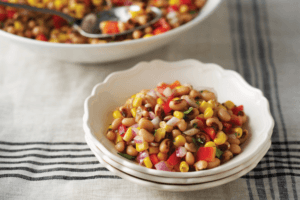
Serving Size:
Serves 10, 3/4 cup per serving
Ingredients:
- 1 medium bell pepper
- 1 small red onion
- 2 (15½ ounce) cans black-eyed peas
- 1 (15¼ ounce) can corn kernels, no salt added
- 3 Tablespoons canola oil
- 2 Tablespoons vinegar
- 1 teaspoon cumin
- ¼ teaspoon salt
- ½ teaspoon ground black pepper
Optional Ingredients:
- ¼ cup fresh cilantro leaves
WHITE BEAN BASIL CHICKEN CHILI
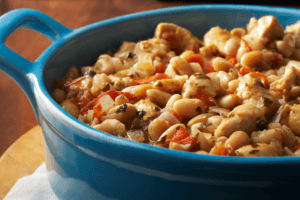
Serving Size:
Serves 6, 1 ½ cups per serving
Ingredients:
- 1 pound boneless chicken pieces
- 1 medium onion
- 2 cloves garlic
- 1 medium tomato
- 1 large lime
- ¼ cup fresh cilantro leaves
- 1 Tablespoon fresh basil
- 2 (15½-ounce) cans great northern beans, no salt added
- 2 Tablespoons canola oil
- 4 cups low-sodium chicken broth
- 1½ teaspoons chili powder
- 1½ teaspoons ground cumin
- ½ teaspoon dried oregano
- ¼ teaspoon salt
- ¼ teaspoon ground black pepper
Optional Ingredients:
- 2 teaspoons red pepper flakes
BLACK BEAN AND VEGETABLE QUESADILLA
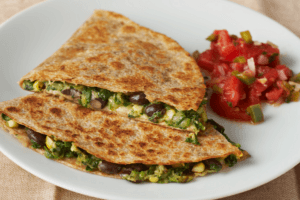
Serving Size:
Serves 6, 1 folded quesadilla per serving
Ingredients:
- ½ (15½-ounce) can black beans, no salt added
- 2 medium zucchini
- 1 bunch fresh spinach (about 4 cups)
- 1 ear fresh corn or 1 cup canned corn
- 4 ounces low-fat cheddar cheese
- 1 Tablespoon canola oil Pinch ground cayenne pepper
- 1–2 teaspoons water
- ½ teaspoon ground black pepper
- 6 (8-inch) whole wheat flour tortillas
- Non-stick cooking spray
Optional Ingredients:
- 3 Tablespoons fresh parsley or cilantro
LENTIL MANGO SALAD

Serving Size:
Serves 10, 1/2 cup per serving
Ingredients:
- 1 cup dried brown lentils
- 1 medium mango or apple
- 1 medium red bell pepper
- 1 large lemon
- ¼ cup canola oil
- ½ teaspoon cumin
- ½ teaspoon salt
- ¼ teaspoon ground black pepper
Optional Ingredients:
- ½ cup minced fresh parsley and/or cilantro
- ½ cup chopped walnuts or toasted coconut
NOODLES WITH PEANUT SAUCE

Serving Size:
Serves 8, 1 cup per serving
Ingredients:
- 1 (16 ounce) package whole wheat pasta
- ¼ cup peanut butter
- ⅓ cup warm water
- ¼ cup low-sodium soy sauce
- 2 Tablespoons cider vinegar
- 4 teaspoons sugar
- 1 bag frozen vegetables, such as broccoli or snow peas, thawed
Optional Ingredients:
- 2 teaspoons red pepper flakes
It’s normal to struggle with thoughts that make you feel bad. Your thoughts can even cause you to talk yourself out of doing things you know you need to do. But those thoughts can be changed, or reframed. Here are some examples of how to take negative thoughts and make them more helpful for you instead.
Negative Thought: What if someone I know sees me at the food bank? I am so embarrassed and don’t want to be judged for being there.
Reframing: I will do anything for my family. Feeding them is more important to me than what someone else thinks.
I can’t control what others think of me.
I am doing the right thing for my family. I don’t owe anyone an explanation.
Negative Thought: Food assistance programs are for people who are jobless or homeless. I am neither.
Reframing: They are here to help, and that’s what I need right now. I don’t need to feel guilty for getting help for my family.
I may have a job and a place to live, but things are still tough. I will pay it forward and help others when I can.
Negative Thought: Cooking at home is too hard and takes too much time. I am not a good cook.
Reframing: Making healthy food for my family will make me feel good. And cooking at home can save money. I can do this, even if it feels hard.
I can start small so I don’t get overwhelmed. I’ll pick one simple recipe and shop for the ingredients.
Negative Thought: I don’t have the time to grocery shop. And taking the kids to the grocery store makes it so much harder!
Reframing: I can find ways to make this easier. I can shop online and have groceries delivered. Or I can try free, curbside pick-up.
I do feel overwhelmed by this, and there are options to help me here. I have handled other challenging situations before. I can do this.
Negative Thought: Eating healthier food is going to be too hard and boring. And I haven’t exercised in forever. I don’t even know where to start.
Reframing: I do know where to start. Being healthy is important to me. I can start by eating an apple a day, or having a salad with dinner.
Talking to someone who knows about this would help. I’ll talk to a provider at Crossover Health. They can show me how to get started.
Remember: Choosing positive thoughts over negative ones can help. Things don’t feel as hard when you approach them with a different attitude. If you tell yourself you can do it, you’re giving yourself the power to try. Don’t worry if you slip back into negative thoughts. Just be aware of them, and keep trying to change, or reframe them.
Hunger Busters
When shopping on a budget, you don’t just want to buy a food item because it fits into the budget. Think about foods that are nutritious and that can keep you feeling full. Focus on healthy fats, fiber, and protein. Foods that fall into these categories keep you from feeling hungry for longer periods of time.
Another thing to think about is snacks. Adding extra food to eat throughout the day adds to the budget. But when you eat smaller meals or snacks every 3–4 hours instead of just three big meals a day, it can help. Not only can it prevent you from eating too much at night, it keeps your blood sugar stable all day. And you’ll be less hungry and more energetic!
Protein
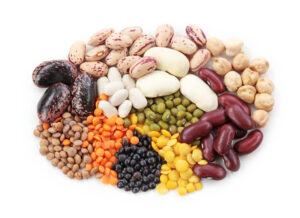
- Low-fat dairy
- Beans
- Canned fish
- Frozen edamame
Fat
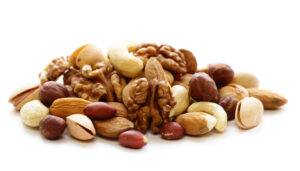
- Dairy
- Nuts and nut butters
- Canned fish
- Eggs
Fiber
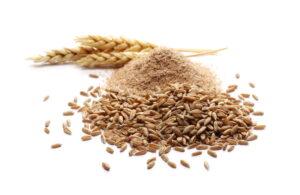
- Whole grains: whole wheat toast, oatmeal
- Fruits (canned, fresh, frozen)
- Vegetables (canned, fresh, frozen)
- Beans and lentils
Snacks
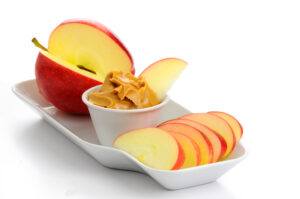
- Apple slices and peanut butter
- Whole wheat toast and almond butter
- Canned tuna and wheat crackers
- Orange and cheese stick
- Popcorn
Facts About Hunger In America
What do you think of when you think of not having enough food? Maybe you think it’s something that only happens in other countries. Or maybe, for you, being hungry hits closer to home. Let’s take a look at some facts about hunger in America.
Food Insecurity
When someone doesn’t have access to enough food, it’s called food insecurity. Being food insecure means someone doesn’t have enough food to live a healthy life. That can mean enough food in general, or certain types of food like fresh fruits and vegetables. When it’s severe, at least one person in a house reduces what they eat or skips meals.
Food Insecurity Breakdown
According to the USDA, in 2019, 10.5% of households were food insecure. That might seem like a small number, but it translates into about 13.7 million households. It’s also important to note that there are some groups that are higher than the national average. Let’s take a look at who is affected:
Food Insecurity and Race
One out of every 5 in the Black or African American community may have experienced food insecurity in 2020 due to the pandemic, including 1 in 4 Black children.
Nearly 20% of Latino children are at risk for hunger.
Within the Asian American community, Vietnamese households have the highest rate of food insecurity at nearly 16.5%.
Food Insecurity and Children
Millions of families lost jobs and income because of COVID-19. That means that more than 42 million people (including 13 million children) may experience food insecurity. People across America, in every county, go hungry every day. Children are at the highest risk. When children are hungry, they are more likely to be unhealthy. It’s also hard for them to do well in school.
Food Insecurity and Health
Eating healthy foods can help people stay well. This is true especially for people who have things like diabetes or high blood pressure. Food insecurity can make these conditions worse. It can also be bad for your heart or make you gain too much weight. Over the last 20 years, hunger among older people (aged 60+) has gone up a lot. Some older people have to either buy food or buy medicine. They don’t have enough money to buy both. There are a lot of older people who could get SNAP benefits but who aren’t signed up.
Food Insecurity and Making Hard Choices
Healthy food can be more expensive. People who are food insecure have to make hard choices, especially if they don’t have a lot of money. Some households have to choose between food and utilities, like heat or electricity. Over half of these people have to choose between food and medicine. Some have to decide whether to buy healthy food or pay for transportation or for school. Some have to sell items in their home for more money. Some may water down foods or drinks or purchase less costly unhealthy food. Others grow a garden so they don’t have to buy fresh fruits or vegetables.
If you have to make hard choices like this, go to our Where to Get Help section. There is help available.
Myths and Facts about Hunger and Access to Food
MYTH: I can’t be food insecure because I have a job.
FACT: Having a job doesn’t guarantee you have enough healthy food. Even if you work, your money might not stretch far enough.
MYTH: I can’t be food insecure because I don’t have a family or am single.
FACT: As seen in the section of facts about hunger and food insecurity, around 13% of women and men living alone lack access to enough food.
MYTH: I can’t be food insecure because I live in a nice neighborhood.
FACT: There are hungry people in every neighborhood. You can learn more by viewing the map at https://map.feedingamerica.org/. Poor people don’t always have access to food, but people who aren’t poor can also go hungry.
MYTH: I can’t be food insecure because I own a car or a house.
FACT: You can own a car or a house and still go hungry. It depends on all kinds of other things including where else your money has to go. You might live in an expensive area where everything costs more. Or maybe you have a lot of medicine to buy or mouths to feed.
MYTH: I can’t be food insecure because I’m overweight.
FACT: You can be overweight and still be food insecure. Food insecurity isn’t just not having enough food. It’s also when you don’t have enough of the right kinds of foods. Healthy foods like fresh fruits and vegetables can be expensive or hard to find. You might be eating a lot of calories but not eating balanced meals. A balanced meal gives you vitamins, minerals, and fiber.
I can’t be food insecure because ____ (fill in the blank).
There is no one way to become food insecure. And there is not one type of person or another that can avoid it. It can happen to anyone. In some cases it is a long-term situation. For others, it may be a temporary situation. Somebody can be food insecure during a time when they have a lot of other things to use their money for or if they lose a job. And when those things are paid, the food insecurity can go away. So, remember that even if you are food insecure now, it doesn’t have to last forever.
Our Care Navigators can help you find food banks or pantries in your area. Our health coaches can talk to you about ways to get food more easily. They can also teach you how to build budget-friendly meals that are good for you.
You are not alone. We help our members with all aspects of their health. Start a conversation with your care team today.
